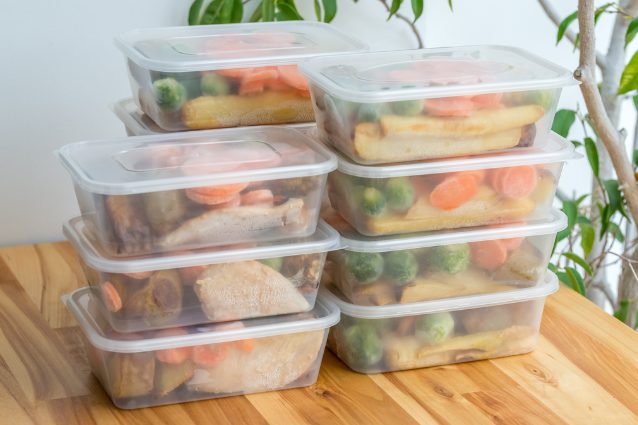The Best Storage Containers for Every Type of Ingredient (Glass, Plastic, or Metal?)
The right storage container can make a big difference in keeping ingredients fresh and flavorful. Glass, plastic, and metal all have distinct advantages depending on the ingredient. From the airtight seals of glass to the lightweight flexibility of plastic and the light-blocking benefits of metal, choosing the right container ensures longevity and flavor.
;Resize,width=742;)
Choosing the right storage container is essential for keeping your pantry ingredients fresh, flavorful, and safe. While glass, plastic, and metal containers are all common choices, each has its own strengths and weaknesses depending on the type of ingredient you need to store. Let’s break down the pros and cons of each material and the best uses for them.
Glass Containers: Best for Visibility and Long-Term Storage

Glass containers are the go-to option for many home cooks who prioritize visibility, airtight seals, and non-reactivity with food. Here’s why glass may be your best choice:
Pros:
- Non-Toxic: Glass doesn’t leach chemicals into food, making it ideal for dry ingredients like flour, pasta, or sugar.
- Airtight Seals: Glass containers with tight-fitting lids help preserve freshness and prevent spills.
- Visibility: Clear glass allows you to see contents easily, making it simple to monitor how much you have left.
- Long-Term Storage: Glass is more durable for long-term storage, as it doesn’t absorb odors or stain.
Cons:
- Breakable: Glass containers are prone to cracking or breaking if dropped.
- Heavier: Glass is often heavier than plastic, which may be a consideration for frequently moved items.
Best for:
Dry ingredients such as rice, beans, flour, pasta, and cereal. Also great for leftovers or refrigerated ingredients.
Plastic Containers: Best for Lightweight, Budget-Friendly Storage

Plastic containers are lightweight, affordable, and versatile, making them a popular choice for kitchen storage. They are available in various shapes and sizes to accommodate everything from snacks to bulk ingredients.
Pros:
- Lightweight: Plastic is much lighter than glass, making it easier to store or transport.
- Affordable: Generally less expensive than glass or metal containers.
- Variety: Plastic containers come in many shapes and sizes, ideal for everything from grains to liquids.
- Shatterproof: Plastic is durable and resistant to breakage.
Cons:
- Chemical Leaching: Some plastic containers can leach harmful chemicals like BPA, especially when exposed to heat.
- Staining and Odor Absorption: Plastic tends to absorb stains and odors over time, particularly with oily or acidic foods.
- Not Airtight: Plastic is generally not as airtight as glass, which could result in quicker spoilage for some ingredients.
Best for:
Short-term storage of dry goods, snacks, or prepped ingredients, as well as leftovers that will be consumed soon.
Metal Containers: Best for Storing Coffee, Tea, and Spices

Metal containers are durable, and some offer the added benefit of protecting contents from light and air, making them ideal for certain ingredients that require extra protection.
Pros:
- Light-Proof and Air-Tight: Metal containers are excellent at keeping light and air out, preventing exposure that can spoil sensitive items.
- Durability: Metal is virtually indestructible, especially when compared to glass or plastic.
- Long-Term Use: Great for storing items that you want to keep fresh for extended periods, such as coffee, tea, and spices.
Cons:
- Not Transparent: You can't see what's inside unless you open the container, which may be inconvenient for some items.
- Reactive: Some metals (especially aluminum) may react with acidic foods like tomatoes or vinegar, which can alter the taste and quality.
- Heavier: Like glass, metal can be heavier and more difficult to handle than plastic.
Best for:
Coffee, tea, spices, and ingredients that are sensitive to air and light exposure, like nuts and seeds.
Choosing the Right Container: It’s All About the Ingredient
Each material has distinct advantages depending on the type of ingredient you need to store. Here’s a quick guide to help you choose:
- Dry Goods: Glass is ideal for long-term storage of grains, flour, and pasta, while plastic works well for short-term storage of smaller items.
- Oily or Fatty Foods: Nuts and seeds do better in airtight glass or metal containers to avoid spoilage from exposure to light and air.
- Liquids: For liquids like sauces, oils, or soups, plastic containers are generally better because of their flexibility and secure lids.
- Refrigeration or Freezing: Glass and plastic are great options, but make sure the container is labeled as freezer-safe if you plan to freeze ingredients.
Final Thoughts
When it comes to storage, choosing the right material is key to preserving your ingredients‘ freshness, flavor, and nutritional value. Glass containers offer visibility and durability, plastic is lightweight and affordable, while metal containers are perfect for light-sensitive items. Regardless of your choice, always prioritize airtight seals and proper sealing methods to ensure that your ingredients stay as fresh as possible for longer.
;Resize,width=767;)



